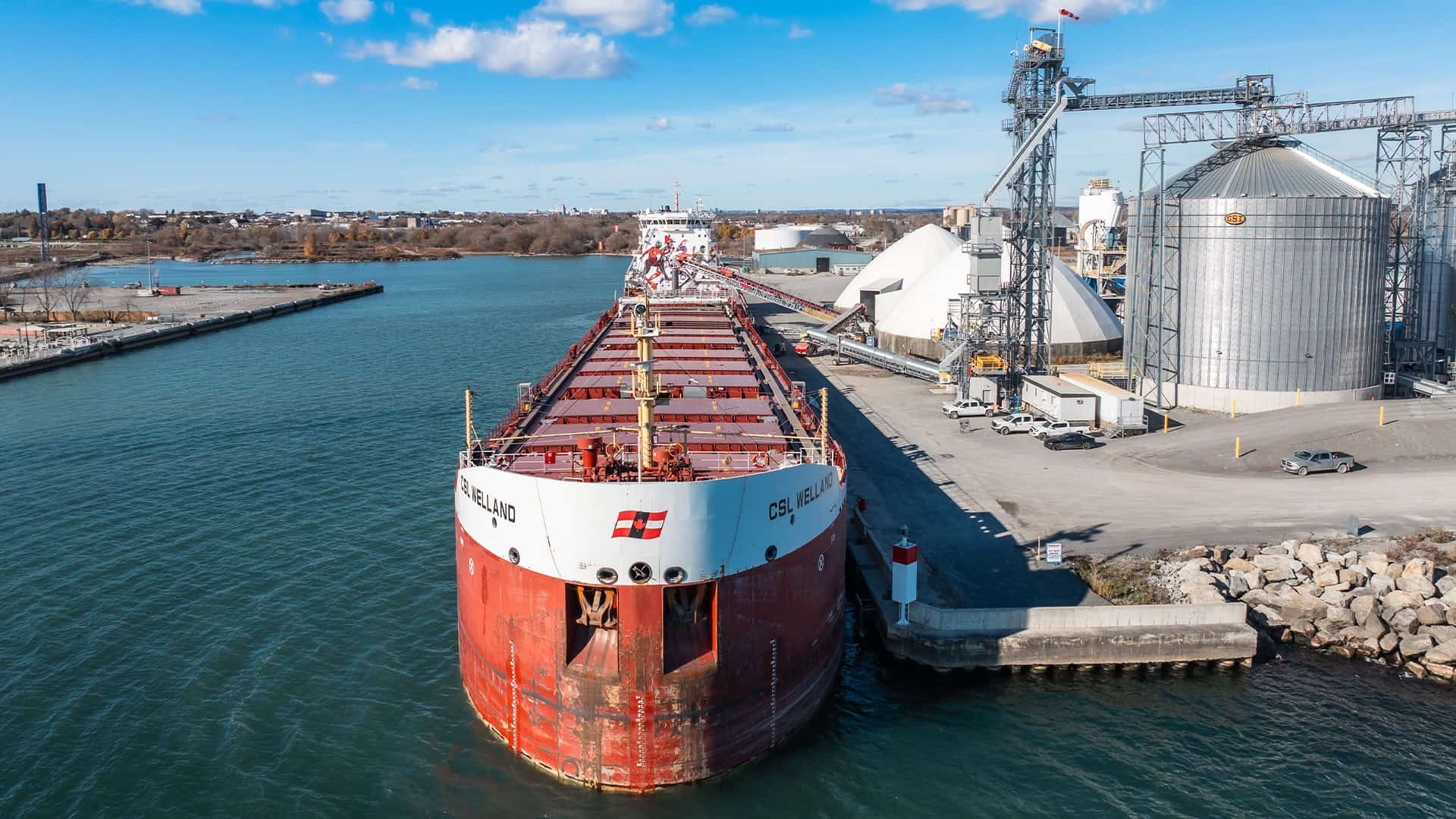Soybeans, anyone? New grain terminal at Port of Oshawa welcomes first ocean-going ship
Published November 15, 2024 at 8:56 am

After a few test truckloads to the newly expanded Port of Oshawa Grain Export Terminal earlier this fall, the first ship arrived in the harbour last week, with more than 18,000 metric tonnes of soybeans loaded into the new and improved terminal.
The MV CSL Welland had the honours of being the first ocean-going vessel to use the facility, which underwent a $35 million expansion and modernization this year.
The newly expanded terminal now offers a total of 20,000 metric tonnes (MT) of storage capacity and features a vessel loading rate of up to 12,000 MT per day, ensuring fast and efficient grain loading. A new dual truck unloading structure, capable of receiving 700 MT per hour, will streamline deliveries and minimize delays. The facility has weather protection, as well as a modern dust control system to meet environmental standards.
“Making this facility work for regional farmers is our priority; we’ve invested in quality infrastructure, improving the terminal’s efficiency from the front gate right onto the vessel,” said Hamilton-Oshawa Port Authority (HOPA) CEO Ian Hamilton. “We’re thrilled the Port of Oshawa is contributing to the resiliency and reliability of Canadian agricultural supply chains.”
The improved facility, funded in part by a $14 million contribution from the federal government’s National Trade Corridors Fund, will help address past issues that impacted its performance, such as delivery lineups, underutilized silos and weather-related operational delays. Accessing and using the site is now easier, saving time and money for farmers. Full-scale dredging of the Oshawa Harbour will ensure that vessels can navigate safely and be loaded to capacity.
The terminal is expected to provide a much-needed export option for local farmers, while freeing up new capacity at other facilities in the region, to handle Ontario’s growing grain output.
“Expanding the Oshawa Grain Export Terminal is a big step for Canada’s trade infrastructure,” enthused federal Transport Minister and Treasury Board president Anita Anand. “We’re helping local farmers, boosting regional economies, and keeping our supply chains strong and efficient.”
The new terminal offers a local delivery point for farmers in the GTA-East region, significantly reducing the distance many of the region’s farmers are travelling to deliver their grain. This reduction in kilometers will help lower greenhouse gas emissions, providing both economic and environmental benefits, with the improvements expected to remove an estimated 12,000 long-distance heavy truck trips from Ontario highways.
The terminal, a joint venture between HOPA Ports and QSL, the company supplying the port’s stevedores, will be ramped in the coming years, with Ontario’s grain production for export expected to increase by two million metric tonnes over the coming decades, with at least 300,000 MT of that grown within the Port of Oshawa’s catchment area.
“QSL is proud to be part of this effort to enhance the potential of the Port of Oshawa. We are looking forward to seeing more grain exported through this facility every year,” said QSL Ontario Vice-President Gino Becerra.
Grain handler Parrish & Heimbecker managed the first test shipments of soybeans, which ran from September to the end of October. These initial loads were used to settle the new bin and fill the existing silo.
The new terminal was built by industry-leader FWS, well-known for its reliability and familiarity with the Ontario market.

INdurham's Editorial Standards and Policies





